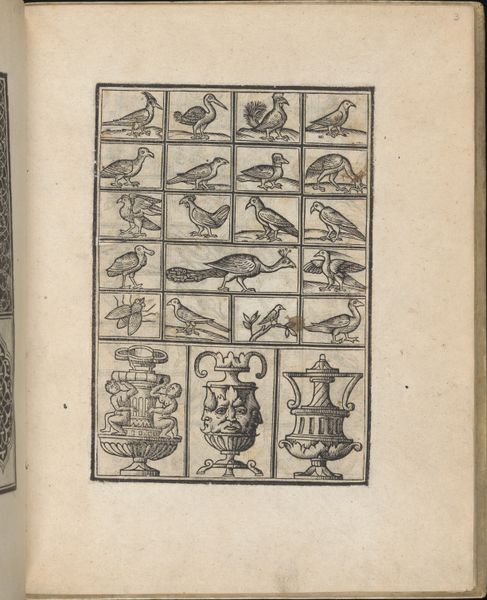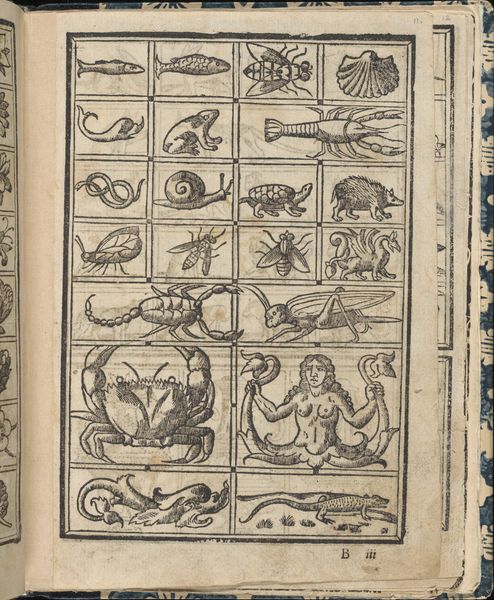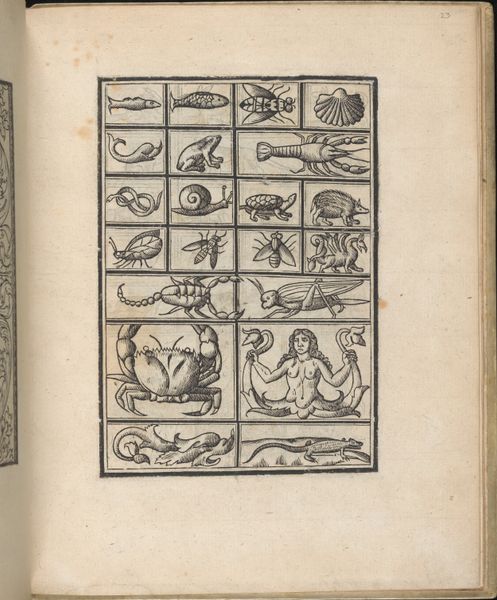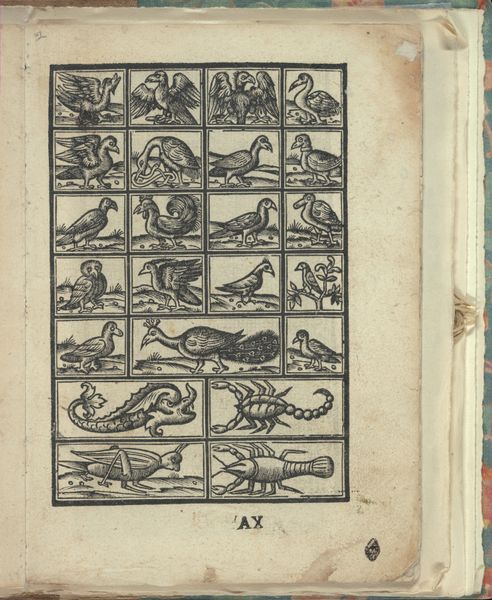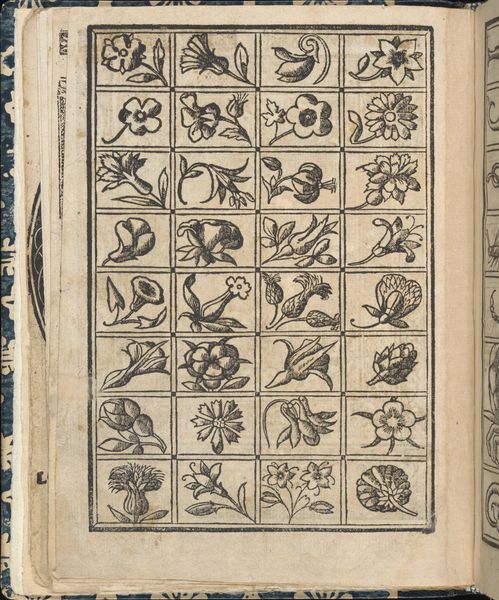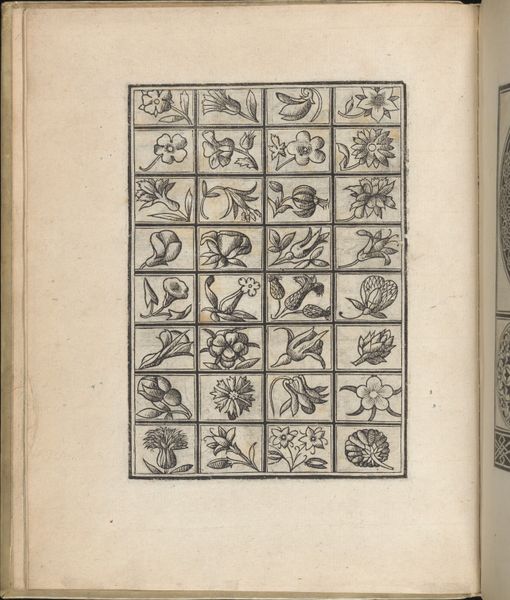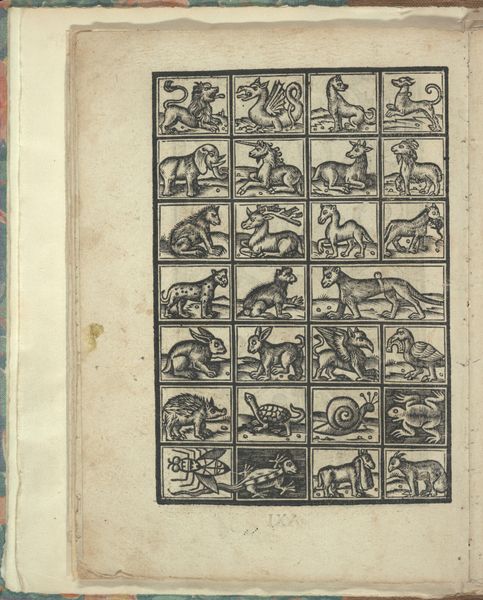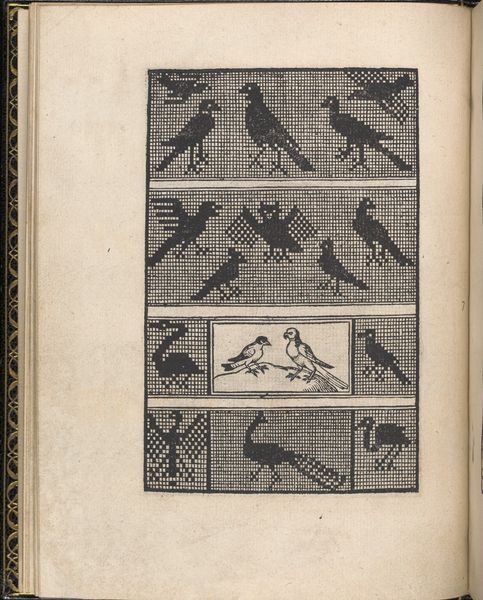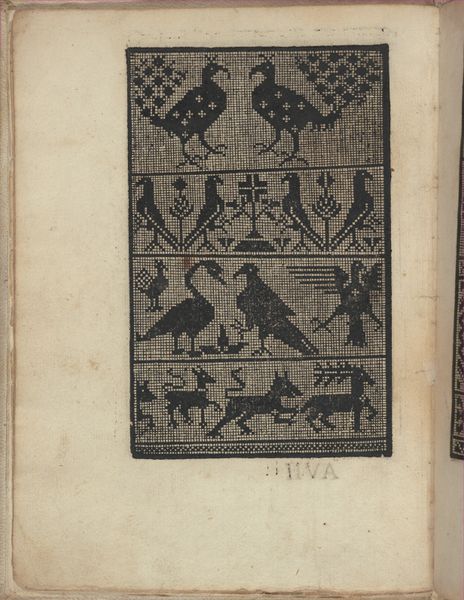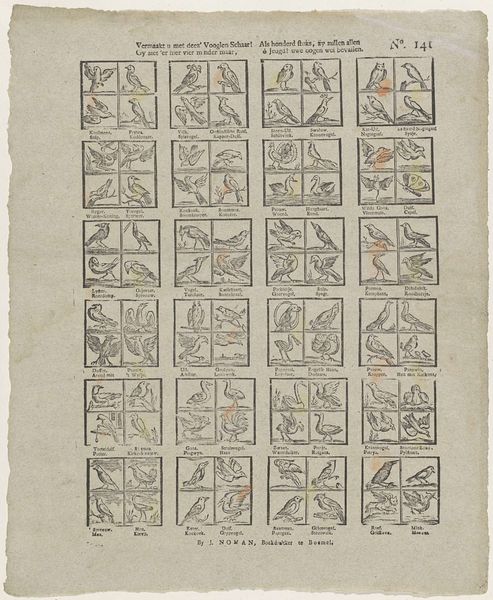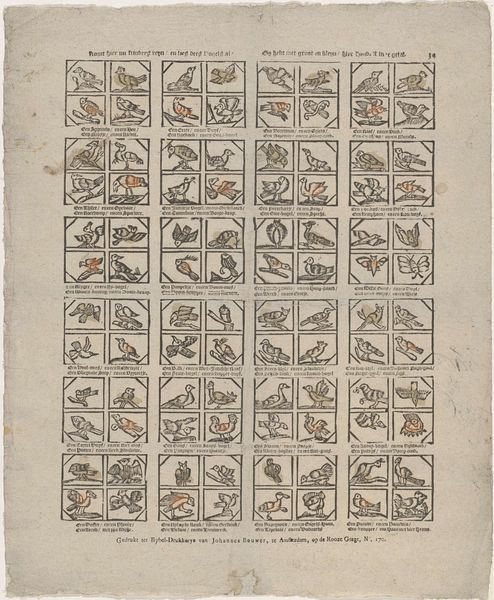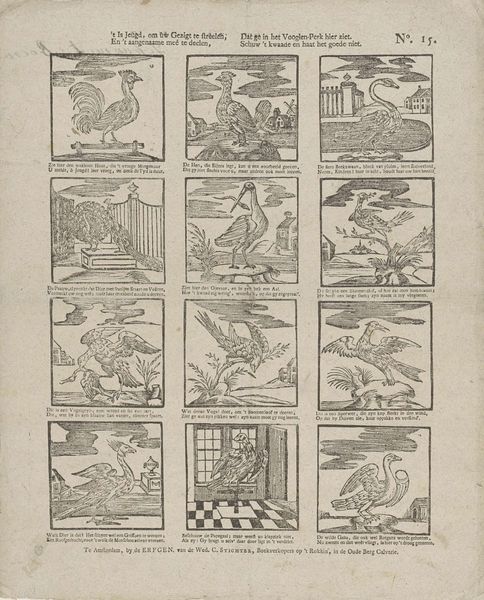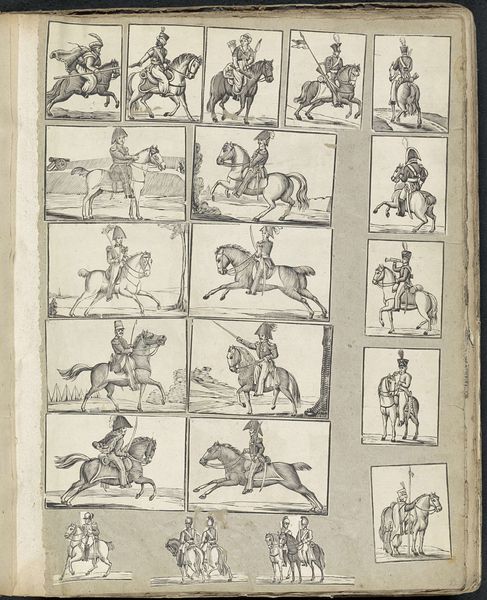
drawing, print, etching, ink, woodcut, pen, engraving
#
drawing
#
toned paper
# print
#
pen sketch
#
etching
#
book
#
asian-art
#
sketch book
#
bird
#
11_renaissance
#
personal sketchbook
#
ink
#
ink drawing experimentation
#
geometric
#
pen-ink sketch
#
woodcut
#
pen work
#
sketchbook drawing
#
pen
#
storyboard and sketchbook work
#
sketchbook art
#
engraving
Dimensions: Overall: 7 13/16 x 6 3/16 x 3/8 in. (19.8 x 15.7 x 1 cm)
Copyright: Public Domain
Curator: Look at this – a page from Giovanni Antonio Tagliente’s *Essempio di recammi*, created around 1530. It's a woodcut and engraving, found in one of his books. Editor: Whoa. Immediately I get this quirky, slightly unsettling feeling. It's like looking at a Renaissance bestiary through a slightly cracked lens. The birds are almost… too regular? Curator: They're stylized, yes. This wasn't meant to be ornithologically accurate. Tagliente's books were pattern books, meant for embroiderers and other artisans. These birds, vases, and figures, would be models. Editor: Ah, okay, like an early form of clip art. But even knowing that, the repetition of these forms within those rigid boxes feels almost… obsessive? Like someone trying to contain nature's chaos, with limited success. I keep being drawn to that one odd little peacock! Curator: The rigid structure was crucial. It allowed for easy transfer of the designs. Workshops would use these patterns directly onto fabric, wood, even metal. Tagliente’s work filled a demand for accessible, fashionable designs. It also speaks to the period's emerging concept of authorship and design dissemination. Editor: Fascinating. You've placed my feelings with such socio-historical understanding of it. Knowing how practical it was gives a nice understanding on why he chose these birds as inspiration. But there's still that little bit of… off-kilter charm. It is like those early naturalists drawing what they only think something may look like, not necessarily its precise depiction. I see these birds fluttering off a tapestry and flying straight into someone’s dreams! Curator: Well, perhaps the best designs do have a way of escaping their intended context. It seems that even something utilitarian can carry a certain cultural memory, even its dreams of form.
Comments
No comments
Be the first to comment and join the conversation on the ultimate creative platform.
